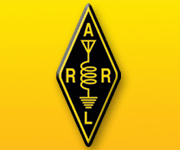ARRL Takes Issue with NTIA’s WRC-15 Proposal for 5 MHz
The ARRL is taking issue with the World Radiocommunication Conference 2015 (WRC-15) stance of the National Telecommunications and Information Administration (NTIA) with respect to an upgraded 60 meter Amateur Radio allocation. In response to WRC-15 agenda item 1.4, the NTIA has called for no change at 5250-5450 kHz. The League said in comments filed September 24 in IB Docket 04-286 that while it concurs with the NTIA’s view regarding 5250 to 5275 kHz — allocated to the radiolocation service for oceanographic applications at WRC-12 — the rest of the agency’s proposal is “unsupportable in light of actual domestic and international practice and contains assertions of incompatibility that are demonstrably not correct.” The US has authorized Amateur Radio secondary operation on five discrete channels in the 5275-5450 kHz range for more than a decade, the ARRL pointed out, with no instances of unresolved interference to primary users.
“Against this backdrop, the stated reason for the no-change proposal — that ‘[e]xperience has shown that sharing is not possible between the Amateur Service and the fixed and mobile service’ — fails the straight-face test,” the ARRL said in its comments.
The NTIA’s position is at odds with the proposal for agenda item 1.4 previously adopted by the FCC’s WRC-15 Advisory Committee (WAC). In January, the WAC recommended a secondary allocation to the Amateur Radio Service from 5275-5450 kHz, and the FCC indicated in a subsequent Public Notice that it could generally support this recommendation.
The League called the NTIA’s position “particularly puzzling” given the position of federal agencies, for which the NTIA manages spectrum, to allow what the ARRL called, “a more disruptive service (radiolocation) in the identical frequency range under consideration here less than three years ago.”
“Neither NTIA nor its constituent federal agencies have credibly or persuasively articulated why fixed and mobile systems in the 5250-5450 kHz range can withstand the demonstrated potential for interference from automated, wideband, HF oceanographic radars, but cannot withstand operation by trained, licensed operators using smaller bandwidths, actually monitoring the spectrum to be used before and during a transmission, and with the capability to shift frequency immediately to avoid incidents of interference with a primary service,” the ARRL commented.
The League asserted that the Amateur Service deserves “the same treatment” that NTIA proposed for HF radiolocation less than 3 years ago. “Proponents of a different treatment, particularly a channelized treatment or a no-change approach, have still not presented a compelling distinction between amateur operation and radiolocation that would justify a departure from the general policy followed by the United States at WRC-12,” the ARRL concluded.
Back





